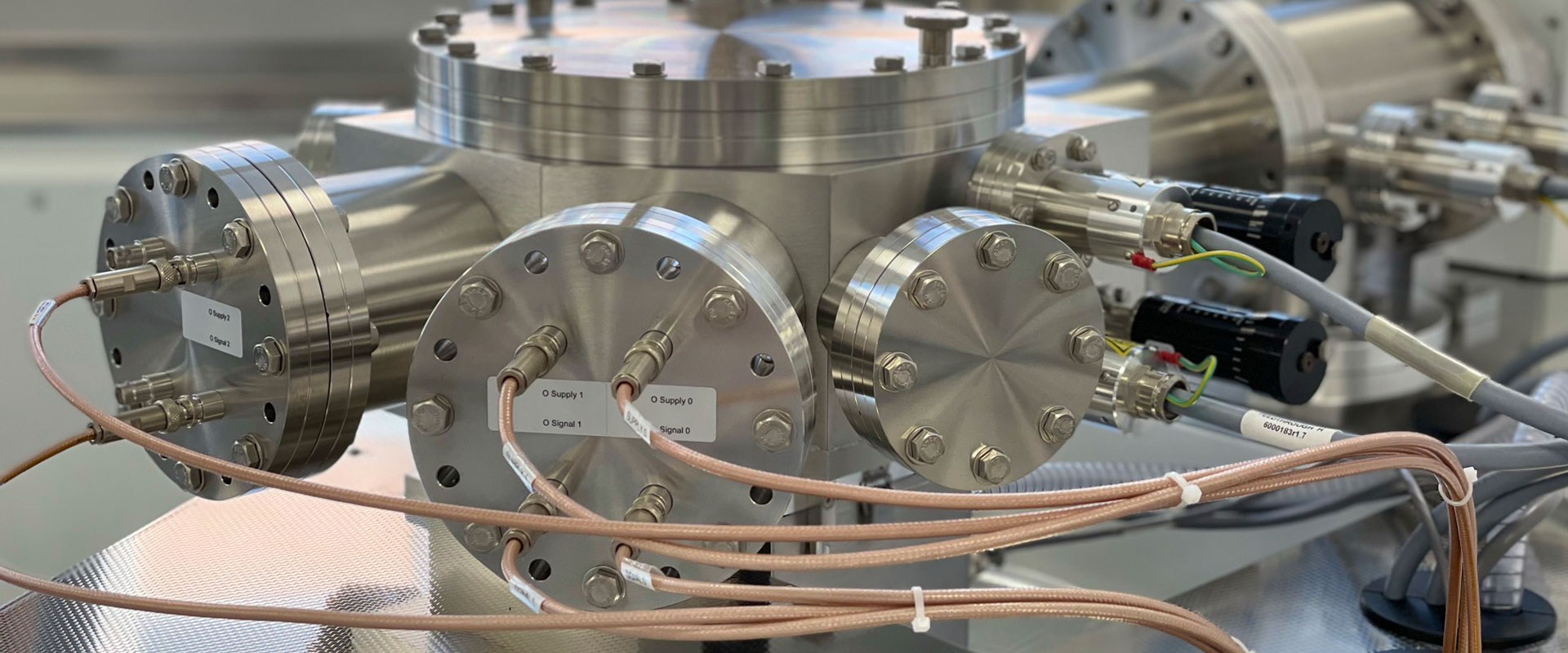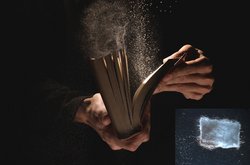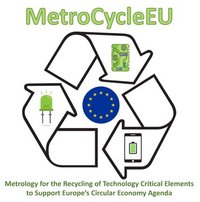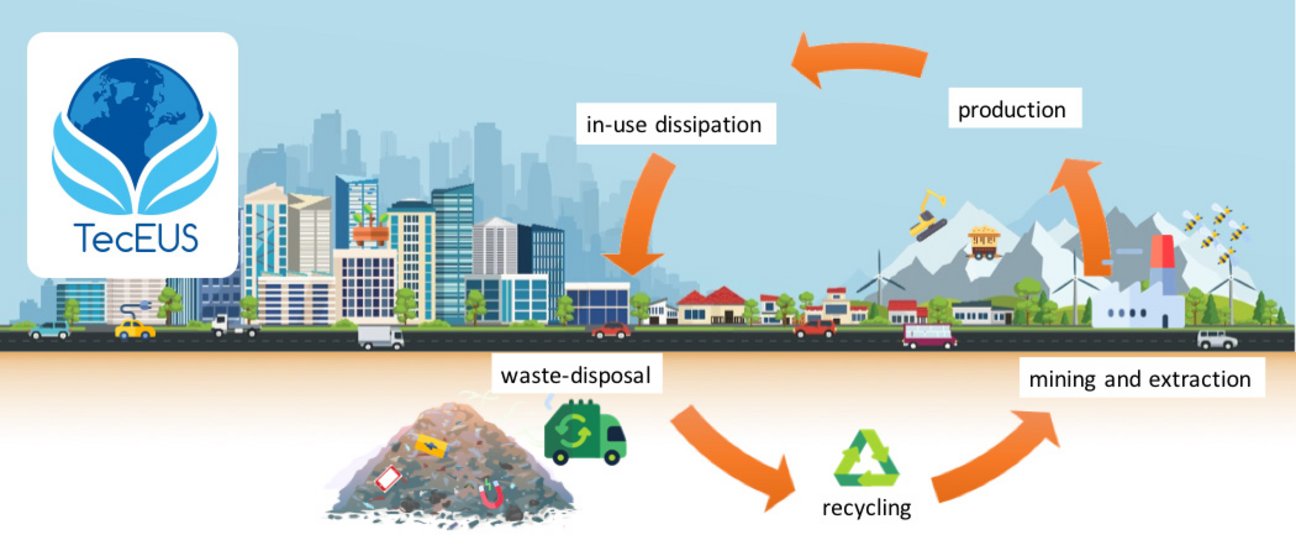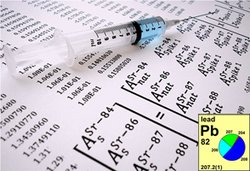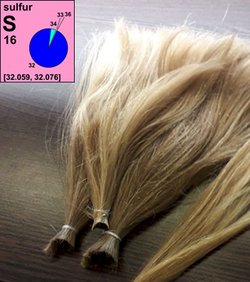AG Isotopenanalytik

Die Arbeitsgruppe Isotopenanalytik beschäftigt sich mit der Entwicklung und Anwendung neuer analytischer Methoden zur Isotopenanalytik. Die Methodenentwicklung umfasst die Entwicklung neuer Methoden zur Analyt- Matrix Separation, die Entwicklung spezies-spezifischer Isotopenmessungen sowie die metrologische Umsetzung der Isotopenanalytik.
Der Hauptfokus der Analytik liegt auf massenspektrometrischen Methoden ((MC)-ICP-MS, TIMS). Ein weiterer Forschungsfokus hinsichtlich der Weiterentwicklung spektrometrischer Methoden (LAMIS, HRCSMAS) ist geplant. Zu den analysierten Isotopensystemen in den Forschungsschwerpunkten zählen unter anderem die Systeme B, Ca, Hg, Mo, Nd, Pb, S, Sr, Ti and Zn.
Die Anwendungen decken den Bereich der Risikobewertung von technologischen kritischen Elementen, Provenienzstudien von Umwelt- und Geomaterialien, sowie den Elementkreislauf in biologischen Systemen und Umweltsystemen ab.
Current projects (Selection)
Abstract: The PHOBOS project, led by Dr. Zlatko Raonic from the Chair of Thermal Process Engineering, aims to develop a new thermal processing approach to recovering phosphorus from sewage sludge waste using an inductively heated packed-bed reactor. This new approach will strengthen the national availability of strategic raw material phosphorus, particularly for the fertilizer industry, by promoting a circular economy strategy. Furthermore, the project aims towards achieving a zero-waste approach, where by-products of the thermal processing approach can be utilized as raw materials for other industries, such as a mineral fraction that can be used as a binder component in the cement industry, and an iron rich fraction that can be used as a raw material for wastewater treatment.
At the Chair of General and Analytical chemistry, analytical methodology will be developed to characterise the materials recovered by the thermal process – testing for the efficiency of phosphorus recovery, as well as testing for the presence heavy metal contaminants. In particular, performing speciation analysis to determine which allotropes of phosphorus are present in the products of the thermal process. Such information is critical to ensure that the phosphorus being recovered is in the correct form for use as a raw material in industry.
Project funding: Austrian Research Promotion Agency (FFG)
Project start: September 2025
Team-MUL: Shaun Lancaster, Johanna Irrgeher, Sara Widhalm, Diana Nascu, Sydney Simbürger
The Linear Pottery culture (LPC) settlement of Schletz, Lower Austria (5400-5000 BC), which was fortified with a double oval and an adjoining trapezoidal ditch, was partially excavated between 1983 and 2005. The site attracted international attention primarily because of the human remains recovered from ditch II: their atypical location (the dead were not buried), injuries and perimortem changes (e.g., animal gnawing) suggest a violent attack on the settlement around 5000 BC. Since more recent LPC settlement traces are lacking, the settlement may have been abandoned after this event.
First results of a molecular genetic analysis seem to indicate an unexpectedly small number of kinships. Therefore, the question arises as to the origin of the dead: They had died together, but had they also lived together? To elucidate on their possible region(s) of origin, the Sr isotope ratio (87Sr/86Sr) will be assessed in tooth enamel and dentine and compared to the isotope landscape (isoscape) of the local bioavailable Sr signatures of the surrounding area. Based on its extent, its spectrum of finds, its duration of occupation and its earthworks, Schletz can be addressed as a central site, which must have been surrounded by a cluster of smaller settlements. However, this cluster is completely unexplored. The project aims to look beyond the site of Schletz. We assume that knowledge of the surrounding settlements, their structure and development is crucial for understanding the social development that led to the violent events on the central site, especially since the final massacre was probably only the end point of a longer development.
Together with archaeologists, Citizen Scientists will survey individual sites known from find reports or suspected because of landscape features. They will recover and document the finds. Local middle school students will extract and process soil samples from the area of the LPC sites to create an isoscape mapping of Sr isotope ratios. This procedure is a prerequisite for determining the origin of the individuals recovered from the Schletz settlement, which, according to our hypothesis, could include a high proportion of non-local inhabitants from the settlement cluster or regions beyond. We expect to be able to estimate the extent of the violent conflict and its effects - which may not have been limited to Schletz alone; we also expect to increase knowledge on the economic and social structure of an early Neolithic society based on a broad data base.
Project funding: Gesellschaft für Forschungsförderung Niederösterreich; FTI-Förderprojekte Grundlagenforschung; Projektnummer: GLF21-2-008
Project partners: Donau-Universität Krems (PI), Landessammlungen Niederösterreich, Naturhistorisches Museum Wien, Universität für Bodenkultur Wien
Project start: October 2022
Webpage: www.united-by-crisis.at
Team-MUL: Johanna Irrgeher (PI), Michael Schober, Sara Widhalm, Thomas Prohaska

European Green Deal’s ambition for zero pollution requires the development of highly sensitive techniques to detect ultra-low amounts of pollutants and to determine their isotope ratios. Mass spectrometry is a key method for determination of non-radioactive polluting elements and is of increasing importance for long-lived radionuclides. This project will bridge the gap between both methods and will establish new tools for tracing pollutants. Measurement uncertainties and detection limits will be significantly reduced using newly developed reference materials and SI-traceable measurement procedures with an immediate impact for tracking pollution sources by commonly available mass spectrometers.
This project supports the strategies described by the upcoming European Metrology Network (EMN) on Pollution Monitoring (POLMO) and the established EMN on Radiation Protection (supporting the Basic Safety Standards directive). According to their strategies, there is a strong need to improve data quality for monitoring and reporting pollution in the air, water, and soil. In addition, the lack of suitable traceability chains and appropriate quality control compromises the comparability and robustness of measurements.
To detect radioactive isotopes and stable polluting elements in the environment, fast, sensitive and inexpensive analytical procedures are needed. Mass spectrometry techniques have a great potential to address this requirement. Despite the increasing application of single collector ICP-MS (Inductively Coupled Plasma Mass Spectrometry), this potential cannot be fully realized unless techniques can be validated with traceable multi-element reference materials. However, multi-element certified reference materials are usually not available and even single-element certified reference materials are limited to very few elements. Nevertheless, these reference materials are urgently needed to calibrate mass spectrometric measurements, due to mass bias effects occurring during the measurements in mass spectrometers.
MUL will especially be active in the activities dedicated to stable isotope ratio analysis.
Project funding: The project 21GRD09 MetroPOEM has received funding from the European Partnership on Metrology, co-financed from the European Union’s Horizon Europe Research and Innovation Programme and by the Participating States.
- Funder name: European Partnership on Metrology
- Funder ID: 10.13039/100019599
- Grant number: 21GRD09 MetroPOEM
Project partners: Physikalisch-Technische Bundesanstalt (PTB), Bundesanstalt für Materialforschung und –prüfung (BAM), Commissariat à l'énergie atomique et aux énergies alternatives (CEA), Cesky Metrologicky Institut (CMI), Institut Jožef Stefan (JSI), Laboratoire national de métrologie et d'essais (LNE), Sateilyturvakeskus (STUK), Turkiye Bilimsel ve Teknolojik Arastirma Kurumu (TUBITAK), Aarhus Universitet (AU), Danmarks Tekniske Universitet (DTU), Helmholtz-Zentrum Hereon GmbH (Hereon), Helmholtz-Zentrum Dresden - Rossendorf e. V. (HZDR), Institutt for energiteknikk (IFE), Institutul National de Cercetare-Dezvoltare pentru Fizica si Inginerie Nucleara ‘Horia Hulubei’ (IFIN-HH), Gottfried Wilhelm Leibniz Universität Hannover (LUH), Norges miljø- og biovitenskapelige universitet (NMBU, Helsingin Yliopisto (UH), Institut za nuklearne nauke Vinča Institut od nacionalnog značaja za Republiku Srbiju, Univerzitet u Beogradu (VINS), Eidgenössische Technische Hochschule Zürich (ETHZ), LGC Limited (LGC), NPL Management Limited (NPL)
Project start: October 2022
Project website: https://www.npl.co.uk
Team-MUL: Johanna Irrgeher (PI), Shaun Lancaster, Ulrike Moser, Stefan Wagner, Antonia Siebenbrunner, Maximilian Zöchling, Zoya Raza

Abstract: New scientific knowledge to environmental geochemistry of conventional and modern inorganic pollutants will be obtained on a European river catchment on the example of the Mur/Mura River. Data acquired from this project will also serve as an expert knowledge baseline for potential improvement of regulatory framework for river waters and sediments, with an emphasis to emerging pollutants and technology-critical elements.
A holistic approach towards cross-border geochemical and isotopic tracking of the fluvial system and its tributaries will be carried out. The project will determine (1) natural geochemical background of the river’s catchment area, (2) the historic and recent anthropogenic sources of elements, (3) interaction between solid and liquid phases in different physical and chemical water conditions, (4) individual particles - carriers of specific pollutants, (5) differences in elemental composition of water and sediments in high, medium and low water regime (6) the potential contamination and baseline levels of emerging modern high-technology pollutants, (7) chemical and isotopic composition (based on XRF and MC ICP-MS) of drainage systems, including drainage waters and drainage sediments and will (8) establish a sampling, analytical and data curation protocols for such complex dataset. The obtained data and information will be (9) merged into easily understandable set of ecological indicators and maps.
- Project funding: CEUS (ARRS-FWF) (International collaboration project SLOVENIA-AUSTRIA)
- Project start: Early 2022
- Project duration: 3 years
Webpage: www.murmap.at
Team-MUL: Johanna Irrgeher (PI, AACH), Ulrike Moser (AACH), Daniel Vollprecht (AVAW), Thomas Prohaska (AACH)
Team-Cooperating institutions:
Slovenian Geological Survey GeoZS (PI: Dr. Gorazd Žibret, Dr. Polona Kralj, Dr. Robert Šajn, Dr. Miloš Miler, Dr. Meta Dobnikar, Dr. Klemen Teran, Emil Pučko, Mladen Štumergar, the National Institute of Chemistry (NIC) (Kristina Mervič, Dr. Martin Šala, Dr. Samo Hočevar) in Slovenia
Abstract: Metal hyperaccumulation is a fascinating phenomenon. About 1% of higher plant species are able to accumulate 100-1000 times higher concentrations of trace elements than “normal” or nonaccumulating plant species in their aboveground tissues without showing any symptoms of toxicity. Most of these species accumulate nickel, whereas the accumulation of other elements (e.g. arsenic, cadmium, zinc) is much less frequent. While physiological and molecular processes have already been investigated in depth, Ni solubilisation processes in the rhizosphere are still largely unknown.
Novel rhizosphere research methods, including root exudate analysis from soil grown plants and highend isotope ratio analytics may offer new opportunities for gaining detailed insight into biogeochemical processes in the rhizosphere of Nickel hyperaccumulators.
This project aims to elucidate plant/microbe induced Nickel solubilisation mechanisms by assessing biogeochemical changes in the rhizosphere induced by roots and associated microorganisms. Isotope ratio analysis will be developed and implemented as a novel tool in rhizosphere research and applied for determining the major soil Ni pools acting as a source for plant-available nickel.
- Project funding: FWF Austrian Science Fund
- Project partners: The project is based at the University of Natural Resources and Life Sciences Vienna (BOKU Wien).
- Project start: September 2021
- Project end: August 2024
Team-MUL: Thomas Prohaska (PI), Alexander Epov, Johanna Irrgeher, Simone Trimmel, Antonia Siebenbrunner, Nadine AbuZahra
Team-Cooperating institutions: Markus Puschenreiter (PI-BOKU), Alice Tognacchini (BOKU), Olivier Donard (PAU, CNRS)
Elemental and isotopic fingerprinting of dust from historical artefacts
Abstract: The project is dedicated to the development and application of multielemental analysis along with isotope ratios to trace the sources of dust collected from historical artefacts in order to gain more information about authenticity and life history of highly precious objects.
- Project funding: Third party funding
- Project partners: Patricia Engel (Donau-Universität Krems, Austria)
- Project start: January 2019
Project Team:Johanna Irrgeher, Christine Opper, Thomas Prohaska
Completed projects
Abstract: The greatest historical records are contained within incrementally grown materials, such as ice cores, tree rings, marine corals and fish otoliths. Isotope ratios hold the key to reading and understanding these historical records. In particular, carbon, oxygen, hydrogen, nitrogen, and sulphur (COHNS) are the magic 5 isotopic systems that have proven to give a substantial insight in many fields of sciences - geosciences, life sciences, anthropology, archaeology, material sciences - to be used for provenancing, characterizing processes, identifying migration patterns of animals and humans, just to state a few examples. However, current methodology to analyse the COHNS elements are limited to bulk analysis, which destroys large quantity of samples, or are too expensive and not widely available to the scientific community. One of the most widely available techniques worldwide is plasma-based mass spectrometry, however only carbon and sulphur isotope ratios can currently be measured, with oxygen, hydrogen, and nitrogen being viewed as “unmeasurable” by this technique.
The isoGATE project aims to take the first steps towards unlocking access to oxygen, hydrogen, and nitrogen isotopes by plasma-based mass spectrometry and make the unmeasurable measurable. To achieve this, we intend to develop novel approaches to remove the spectral interferences that plague the determination of these isotopes – specifically using inductively coupled plasma tandem mass spectrometry (ICP-MS/MS) and multicollector (MC)-ICP-MS. The success of the isoGATE project will provide the breakthrough necessary to pursue new approaches to analysing natural archives, such as utilizing laser ablation sample introduction for high resolution mapping.
Project funding: Land Steiermark: Unkonventionelle Forschung
Project start: December 2022
Publications: Lancaster, S. T., Irrgeher, J., Dallmayr, R., Conrad, E., Hörhold, M., Bohleber, P., Behrens, M., Camin, F., Žagar, K., Vreča, P., Prohaska, T. (2025) δ(18O/16O) determinations in water using inductively coupled plasma – tandem mass spectrometry, Analytical Chemistry, 97, 20788-20797.
https://doi.org/10.1021/acs.analchem.5c02607
Team-MUL: Shaun Lancaster (PI), Johanna Irrgeher, Thomas Prohaska
Abstract: Chemistry should be for everyone, which includes accessibility and operability of analytical instrumentation, such as software but also hardware (e.g. mass spectrometers…)
Within this project, we aim at evaluating support strategies for promoting accessibility and operability of disabled scientists to analytical instrumentation. This includes a critical evaluation of barriers and difficulties currently in place. In close dialogue with disabled chemistry students and scientists and in cooperation with instrument manufacturers we would like to elaborate on possibilities on how to remove barriers to analytical instrumentation for operators with disabilities, e.g. including visually impaired individuals or persons using a wheelchair.
This may include changes of the instrument hardware and accessibility but also needs for software to be inclusive, modifying, adapting or rewriting laboratory protocols for the inclusion of existing assistive technologies, to enable chemists with disabilities of different nature to undertake laboratory experiments independently.
- Project funding: Royal Society of Chemistry (RSC), Inclusion & Diversity Fund (https://www.rsc.org/prizes-funding/funding/inclusion-diversity-fund/)
- Project start: January 2022
Webpage: https://icpms-leoben2022/inclusion-in-lab
Team-MUL: Johanna Irrgeher (PI) & team

Interlaboratory Comparison – 87Sr/86Sr characterisation of cement, limestone and slate reference materials
Abstract: The type and origin of the construction materials and raw materials used, but also the manufacturers of the components, are of great relevance for damage prevention, for damage assessment, for the resulting liability issues, for forensic investigations, for restoring old buildings and when considering historical concretes. 87Sr/86Sr isotopic analysis has great potential for fingerprinting building materials, including cement and concrete. In light of this, the Bundesanstalt für Materialforschung und -prüfung (BAM) is organizing the interlaboratory comparison for the characterisation of 87Sr/86Sr isotope ratios in cement, limestone and slate reference materials by applying the conventional method for 87Sr/86Sr. The characterisation study is a part of a BAM project to establish an analytical procedure for cement provenancing. The Isotope Research Group participates in this interlaboratory comparison.
- Project partners: Bundesanstalt für Materialforschung und -prüfung (BAM), Germany, supported by the International Association of Geoanalysts (IAG)
- Project start: April 2021
- Project end: (if applicable) December 2021
Team-MUL: Jochen Vogl (PI, BAM), Anera Kazlagic (BAM), Anika Retzmann, Johanna Irrgeher, Thomas Meisel, Thomas Prohaska, and further participants of the ILC
Metrology for the recycling of Technology Critical Elements to support Europe’s circular economy agenda
Abstract: Technology critical elements (TCEs) are vastly used throughout society; including phones, computers, and renewable energy products, such as solar panels and wind turbines. However, dwindling supplies of TCEs threaten to disrupt such technology production worldwide, which is especially concerning given a recent drive for more renewable energy sources. In 2017, the European Commission issued new targets for recycling TCE containing waste, however progress towards this goal is limited due to low availability of standards for quantification of these elements in urban mine waste matrices – a substantially challenging matrix due to the high heterogeneity of samples.
As such, the aim of this collaborative project is to develop new, SI traceable reference materials and methodology for accurate and precise quantification of TCEs in urban mine waste to aid with new recycling strategies. At the Chair of General and Analytical Chemistry, Montanuniversität Leoben, our primary aim is to explore the use of tandem ICP-mass spectrometry (ICP-MS/MS) and x-ray fluorescence spectrometry (XRF) measurement approaches for urban mine waste matrices. Consequently, new sample preparation strategies, including the use of pressurized microwave digestion, will also be developed. Additionally, laser ablation imaging will be used to assess the distribution of TCEs in the waste samples, ultimately assisting with the generation of a suitable new reference material.
- Project funding: European Metrology Programme for Innovation and Research (EMPIR) and EU Horizon 2020.
- Project partners: Laboratoire national de métrologie et d'essais (LNE), France. Bundesanstalt fuer Materialforschung und –pruefung (BAM), Germany. Institut za mjeriteljstvo Bosne i Hercegovine (IMBiH), Bosnia and Herzegovina. Istituto Nazionale di Ricerca Metrologica (INRIM), Italy. LGC Limited (LGC), United Kingdom. Physikalisch-Technische Bundesanstalt (PTB), Germany. RISE Research Institutes of Sweden AB (RISE), Sweden. Suomen ymparistokeskus (SKYE), Finland. Turkiye Bilimsel ve Teknolojik Arastirma Kurumu (TUBITAK), Turkey. BRGM, France. ERAMET IDEAS (EID), France. Helmholtz-Zentrum Geesthacht Zentrum für Material- und Küstenforschung GmbH (HZG), Germany. Institut Jožef Stefan (JSI), Slovenia, Eidgenössisches Institut für Metrologie METAS (METAS), Switzerland.
- Project start: June 2021
- Project website:www.metrocycle.eu
Team-MUL: Johanna Irrgeher (PI), Melissa Eberhard, Shaun Lancaster, Alessandra Rachetti
TecEUS - Technology-Critical Elements in Urban Spheres
Abstract: The project aims at the systematic quantification of drivers, sources, pathways and sinks as well as environmental and human health threats of technology-critical elements (TCEs; e.g. tantalum, niobium, antimony, neodymium) in the urban spheres of Vienna. Within this project, TCE levels will be measured systematically in water, soil, plants and aerosol, supported by citizen science approaches involving residents and gardeners. Novel analytical techniques based on inductively-coupled plasma mass spectrometry (ICP-MS) will allow to detect the low levels of TCEs expected in natural samples. Green façades and plants will be evaluated for the efficiency to bind airborne TCEs both in field studies and in controlled wind channel box exposure experiments. A simplified socio-ecological model will be developed depicting the biophysical stocks and flows of TCEs and their human health implications along with the development of prospective scenarios and monitoring requirements. Maps of exposure and emissions will be made publicly available.
The transdisciplinary project combines analytical environmental chemistry (Montanuniversität Leoben, Dept. of Chemistry), landscape engineering (University of Natural Resources Vienna, Institute of Soil Bioengineering and Landscape Construction), socio-ecological modelling (University of Natural Resources Vienna, Institute of Social Economy) and human health (Medical University Vienna, Centre of Public Health).
- Project funding: FWF Stand Alone Project
- Project partners: University of Natural Resources and Life Sciences Vienna (BOKU), Medical University Vienna, TU Wien
- Project start: April 2020 Project
- Project website: www.teceus.at
Publications: Spörl, P.; Göndör, A.;Irrgeher, J.; Prohaska, T.; Trimmel, S.;Capari, L.; Haluza, D.; Scharf, B.; Kasper-Giebl, A.; Pitha, U. Development of a Mobile Module-Based Wind Tunnel for the Determination of Collection Efficiencies of Particulate Matter on Surface Structures. Sustainability 2021, 13, 9565. https://doi.org/10.3390/su13179565
Team: Christine Opper, Donata Bandoniene, Thomas Prohaska, Johanna Irrgeher (PI) Laura Feiner, Maria Feiner, Nagi Lashin, Martina Maurer, Julia Retter, Simone Trimmel
Hydrochemical Characterisation of Deep Groundwater Systems in Upper Austria using multi-elemental fingerprints and Strontium Isotope Ratios
Abstract: The project coordinated by the Chair of Petroleum Geology aims at the source characterization of groundwater sources in Upper Austria based on multielemental pattern and strontium isotope ratio analysis. Within her Master thesis, Virginia Foelserl (Master Geology) uses multielemental data in combination with strontium isotope ratios assessed in a large sample set taken at different sampling stations in Upper Austria and assessed by (MC) ICP-MS to trace the lateral and vertical distribution of hydrostatigraphic units in the area.
- Project start at AAC: October 2019
- Project funding: ÖAW - Programm: Earth System Sciences (ESS
Team:Virginia Foelserl, Christine Opper, Johanna Irrgeher, Doris Groß(project PI, Chair of Petroleum Geology)
Investigation of the fate of Pb in human systems
Abstract: Exposure to Pb can cause substantial organ damage. The concomitant intake of clinoptilolite tuff (zeolite) may reduce the enteral Pb absorption. In a medical study, enriched 204Pb isotopes were applied to monitor the fate of trace-level Pb in the human body. Pb isotope ratio measurements were performed using ICP-MS. Based on the natural isotopic composition prior to treatment with enriched 204Pb, isotope pattern deconvolution (IPD) was successfully applied as mathematical tool to monitor the fate of 204Pb and its reduced uptake due to clinoptilolite tuff in the human body.
- Project funding: Third party funding
- Project partners: Glock Health Gmbh
- Project start: November 2018
- Project end: (if applicable)
- Project website:-
Publications: Samekova, K., Firbas, C., Irrgeher, J., Opper, C., Prohaska, T., Retzmann, A., . . . Wolzt, M. (2021). Concomitant oral intake of purified clinoptilolite tuff (G-PUR) reduces enteral lead uptake in healthy humans. Scientific Reports, 11(1), 14796. doi:10.1038/s41598-021-94245-x
Team-MUL: Johanna Irrgeher (PI), Christine Opper, Anika Retzmann, Thomas Prohaska
Team-Cooperating institutions: Gouya Insights, Medical University Vienna
Development of species-specific S isotope ratio measurements in biological material
Abstract: The project is dedicated to the development and optimization of a species-specific method for determining the isotopic composition of sulfur contained in the amino acids cysteine and methionine in hair samples. First results of the development of a suitable sample preparation method (hydrolysis of the proteins contained in the hair), the separation of cysteic acid and methionine sulfone by means of ion chromatography and the determination of the sulfur isotopic composition by means of MC ICP-MS will be further applied to a variety of biological systems.
- Project funding: Third party funding
- Project partners: University of Natural Resources and Life Sciences Vienna (AT), University of Calgary (CA)
- Project start: October 2018
Project Team:Johanna Irrgeher (PI), Stephan Hann, Michael Schober, Hedda Drexler, Michael Wieser, Kerri Miller, Aaron Wilkins
Ca isotopes as tracers in life sciences
Abstract: Biological processes like biomineralization and the human Ca homeostasis produces significant fractionation of Ca isotopes. The analysis of Ca isotopes in biological tissue, including human bone, blood, urine and hair, has great potential to identify changes in Ca metabolism and bone metabolism, which are linked e.g. to increased bone resorption due to a disease like senile osteoporosis, multiple myeloma, kidney diseases, and diabetes. In this project, we developed a fully validated double-spike MC TIMS measurement procedure to determine low-amount Ca isotope ratios in limited biological samples. Further, for the first time Ca isotopic analysis of hair reference materials indicated a potential fractionation of Ca incorporated into hair tissue when compared to the blood pool. The laboratory work was contucted at the University of Calgary (Canada) in Professor Mike Wieser’s Isotope Lab.
- Project funding: Chemical Monthly fellowship (2018) of the Austrian Academy of Sciences (ÖAW), Discovery Research Grant by the Natural Sciences and Engineering Research Council of Canada (NSERC), Faculty of Science Grand Challenges Fund of the University of Calgary.
- Project partners: University of Calgary, Department of Physics and Astronomy, Stable Isotope Laboratory, Canada
- Project start: January 2019
Publications: Retzmann, A., Walls, D., Miller, K., Wieser, M., Irrgeher, J., & Prohaska, T. (2021). Assessing the potential of online ICP–MS analysis to optimize Ca/ matrix separation using DGA Resin for subsequent isotopic analysis. Monatshefte für Chemie, 152, 401-410. doi:10.1007/s00706-021-02754-2
Retzmann, A., Walls, D., Miller, K. A., Irrgeher, J., Prohaska, P., Wieser, M. E. (2021). A double-spike MC TIMS measurement procedure for low-amount Ca isotopic analysis of limited biological samples. Analytical and Bioanalytical Chemistry. doi: 10.1007/s00216-021-03650-8
Team-MUL: Anika Retzmann, Michael E. Wieser, Dorothy Walls, Kerri A. Miller, Johanna Irrgeher, Thomas Prohaska
Mammoth Migration in Alaska
Abstract: Within a wide-scope project hosted at the University of Fairbanks (USA) dedicated to a better understand why woolly mammoths survived late into the mid-Holocene only in the environments of arctic islands of the Bering Land Bridge. Furthermore, this research is testing various hypotheses proposed to explain the extinction of the Holocene mammoth population on St. Paul Island, Pribilof Islands, Alaska, as well as establish the actual time of extinction. We are happy to contribute to the development of analytical methods dedicated to Sr isotope ratios based on LA-MC ICP-MS.
- Project partners: University of Alaska Fairbanks (USA), University of Calgary (CA)
- Project start: June 2018
Learn more:http://ine.uaf.edu/werc/people/faculty/mat-wooller/
